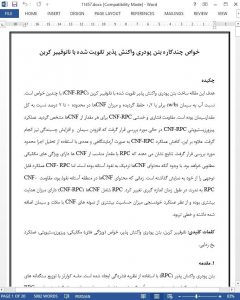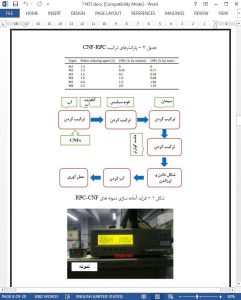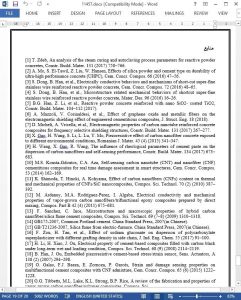Abstract
This paper aimed to develop carbon nanofiber (CNF) reinforced reactive powder concrete (CNF-RPC) with multi-functional properties. Water to binder ratio (w/b) was kept at 0.2 and CNFs dosage ranged from 0% to 2% by volume of the total cementitious materials. Flexural and compressive strengths of CNF-RPC were determined for each dosage of CNFs. Piezoresistive performance of CNF-RPC was investigated while the piezoresistivity of CNFs added cement paste and mortar were also performed. Moreover, deicing performance of CNF-RPC was experimentally researched and numerally simulated using finite element analysis. Results indicated that RPC with appropriate content of CNFs performed favorable mechanical properties and excellent self-sensing performance. While CNFs content was close to the post-percolation threshold zone, CNF-RPC presented an obvious deicing performance. When CNFs content was in the percolation threshold zone, resistance of CNF-RPC rarely changed with measurement time. RPC containing CNFs (CNF-RPC) was more conductive and demonstrated a higher sensitivity and linearity of self-sensing performance than CNFs added cement paste and mortar samples.
1. Introduction
Reactive powder concrete (RPC) is produced with the maximum compactness theory. Quartz sand with optimized particle size distribution is used as fine aggregate instead of coarse aggregate and ordinary river sand. RPC usually contains a high percentage of mineral admixtures [1]. The mineral admixture can enhance the activity of RPC matrix, thus increasing the compactness of multi-size particle system. Therefore, RPC presents ultra-high strength, high toughness and excellent durability [1,2].
4. Conclusion
This research developed one special kind of cement-based material with ultra-high-strength, self-sensing and deicing performance. The following conclusions can be obtained from the above experimental results.
1) Compressive and flexural strength of RPC increased firstly and then decreased with the higher dosage of CNFs. The maximum compressive and flexural strength reached 117.1 MPa and 22.4 MPa respectively when 0.5% of CNFs was added.
2) Resistance of CNF-RPC within the percolation threshold zone behaved stable with time. CNF-RPC presented a better conductivity and sensitivity than CNFM and CNFP. CNF-RPC with 0.5% CNFs (resistivity was 1.17 kX�cm) showed an excellent self-sensing performance with a high gage factor and stable sensing performance.
3) When CNFs reached 1.0% (resistivity was 0.144 kX�cm), CNF-RPC behaved a good deicing ability. The numerical simulation for deicing process provided a similar result to the experiment.











